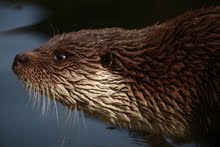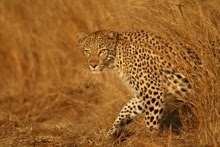Last year we made a couple of little video to show digiscopers how to set up and use the new Swarovski UCA digiscoping adapter.
The Swarovski UCA digiscoping adapter was developed with two core principals:
 Canon EOS 350D set up for digiscoping on the new UCA adaptor
Canon EOS 350D set up for digiscoping on the new UCA adaptor
Practically any camera suitable for digiscoping can be mounted on the Swarovski UCA using the camera's tripod thread. This is particularly important because camera technology is changing so quickly that it makes sense that people will want to have the option of changing their cameras every few years, without having to change their entire digiscoping setup. Many people also start digiscoping with the small compact point & shoot camera they have at home already, but would like to have the option of changing camera in the future, or possibly even purchasing a DSLR for digiscoping. This is when the Swarovski UCA comes in really handy.
To set up the Swarovski UCA for a compact camera:- align the supporting platform such that there is just a small area (suitable for a compact camera). If you have a DSLR, you would rotate this platform around to give a much larger support area (see video)
- attach the camera on to the removable base plate. note: if your compact camera has a tripod thread that is not directly under the objective lens, then you will want to move the screw to the off-center position on the removable base plate
- turn the camera on and extend the zoom lens out (normally in wide-angle position)
- slowly slide the camera on to the mounted UCA making sure the camera lens does not bash up against the telescope's ocular lens
- adjust the height by loosening the screw on the right and watching the camera's display screen
- now loosen the large black screw underneath the platform to adjust the horizontal and distance alignment. Ideally, you want to position the camera so that there is either no vignetting (the black ring around the image), or until the vignetting ring is a sharp, centered circle
- If you still have a little bit of vignetting, then use a little bit of camera zoom to remove the vignetting completely. As a general rule of thumb, always use as little camera zoom as possible (and then only optical zoom, not digital). Using your telescope's zoom on the lowest magnification will give you the brightest image (biggest aperture), making it easier to take sharp photos. If you need to zoom in more, then rather use the spotting scope's zoom than the camera zoom (the quality of the former is likely to be much higher than the latter)
- now that your camera is set up physically, you can use your normal camera settings to go digiscoping (Aperture priority, smallest f number, suitable ISO, macro focus mode, count down timer...).
- For tips on taking sharp digiscoping photos, see this video
watch in HD!
To set up the Swarovski UCA for a DSLR camera:- align the supporting platform so that you have a large area, big enough to support your DSLR, as opposed to rotated and made more compact for a point and shoot camera (see video)
- attach the camera on to the removable base plate, making sure that the screw is in the centre position on the base plate (as opposed to the off-set position for many compact cameras)
- the type of camera objective lens you use is important for mounting and using your DSLR for digiscoping. Normally, your best bet would be to use something like a fixed 50mm f1.8 lens (aperture wide open). Pancake lenses are great as they keep the camera's weight as close to the telescope's eyepiece as possible. It is possible to use a small kit zoom with some small DSLRs. e.g. with a Canon 1000D setting the 18-55mm zoom to 37-55mm should give you a vignetting free image. The problem with zoom lenses are twofold: they generally do not have the quality of the fixed lenses, and they are longer so there is greater leverage holding the weight of the (comparatively) heavy DSLR far away from the attachment point and the scope's eyepiece.
- slowly slide the camera on to the mounted UCA making sure the camera lens does not bash up against the telescope's ocular lens
- adjust the height by loosening the screw on the right
- now loosen the large black screw underneath the platform to adjust the horizontal and distance alignment. Slowly move the camera until the front of the camera's objective lens fits snugly and centered against your spotting scope's eyecup
- TURN AUTOFOCUS OFF! you do not want to burn out your objective lens
- If you still have a little bit of vignetting, then adjust your objective lens's zoom to remove this. Using your telescope's zoom on the lowest magnification will give you the brightest image (biggest aperture), making it easier to take sharp photos. If you need to zoom in more, then rather use the spotting scope's zoom than the camera zoom (the quality of the former is likely to be higher than the latter)
- now that your camera is set up physically, you can use your normal camera settings to go digiscoping (Aperture priority, smallest f number, suitable ISO, count down timer...)
- For tips on taking sharp digiscoping photos, see this video
watch in HD!
Remember, there is a general rule in photography:
In order to get a sharp photo, use a shutter speed greater than the focal length
i.e. if the focal length is 50mm, use 1/60s shutter speed or faster
if the focal length is 1000mm (as is typical in digiscoping), use 1/1000sec or faster
This rule can be bent a bit, but the more you bend it, the harder it will be to
get sharp digiscoping photos. This is where
understanding ISO and choosing an appropriate ISO will really make a difference.
Happy digiscoping,
Dale Forbes





























.jpg)



.jpg)








.jpg)


